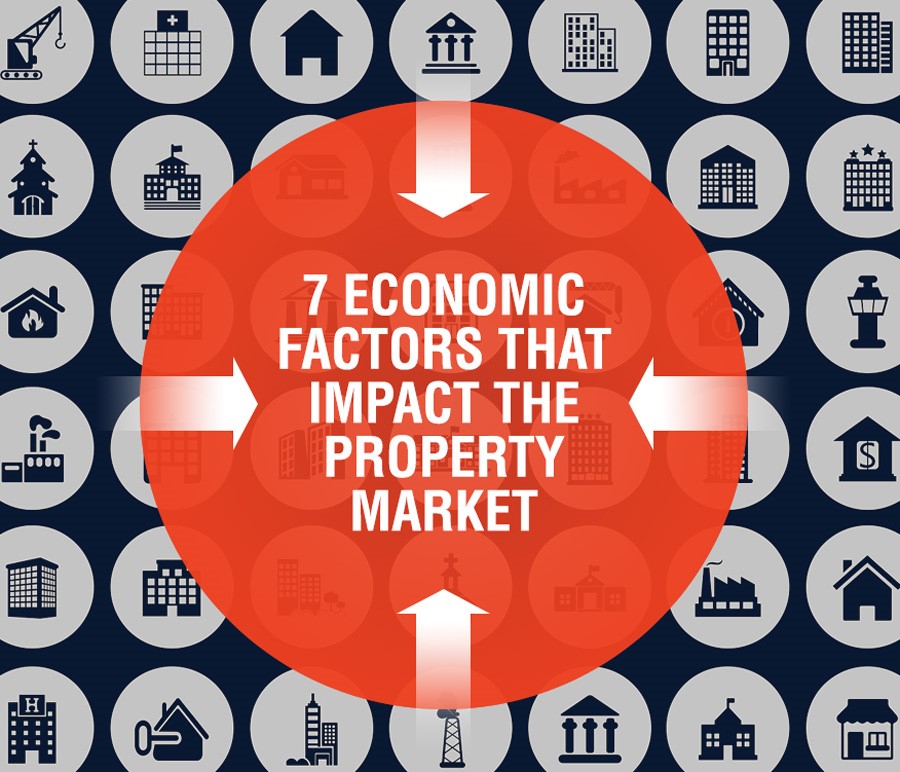Keeping ahead of Australia’s economic climate is a wise investment of your time, when taking control of your financial future through investing in property.
The Australian Bureau of Statistics (ABS) website home page is a handy go-to for a snapshot of how Australia’s economy is faring at any one point in time.
In this article, we’ll run through some of the national key economic indicators you should be keeping an ear and eye out for and why you should care.
On the go? Here’s 30 seconds of take outs:
- Affordability is the key driver of the property market. There are many ways that the Australian government and economists measure affordability and project what’s ahead. These are referred to as national key economic indicators.
- There are several online sources that you should keep at your fingertips to stay ahead of what is happening economically. I recommend the Australian Bureau of Statistics’ (ABS) home page; the Organisation for Economic Cooperation and Development (OECD) Australian data and the Property Council of Australia.
- Consider reading the financial pages of Australian media publications regularly, so you can increase your economics knowledge and get a better understanding of how investing in property fits in.
Keep reading >>
What is Gross domestic product (GDP)?
GDP is a good economic checkpoint to get your head around. In simple terms, it is an indicator of the overall health of a country’s economy based on industry sectors and production. The GDP rate is the main gauge you should keep in your peripheral vision.
The GDP is measured by a total dollar value per person (or per capita) in one of three ways including:
- income generated by the economy
- expenditure on goods and services
- the value of goods and services produced by each industry sector.
I am not an economist, and the calculation itself is complex. If you’re keen to get deeper into the detail, you can find more information on the Australian Bureau of Statistics (ABS) website > National accounts > Defining and measuring GDP.
To keep it simple, if Australia’s GDP is rising then the economy is in good shape. The GDP growth rate is how much more Australia has produced overall, compared to the quarter before.
If you visit OECD.org > Australia, you’ll find some crisp snapshots of economic data for Australia, including GDP. At the date of writing this blog article, Australia’s projected GDP growth rate is three per cent.
How does GDP effect the property markets?
If property buyers are feeling confident about the overall economic health of Australia, property markets will generally be looking positive.
GDP is great for property investors as an indicator of the standard of living ¾ a growing economy creates a positive flow on effect into property. When the data shows that the economy is growing, confidence is high, and people will generally be motivated to improve their standard of living. They feel safe that their investment will grow.
What is the Consumer Price Index (CPI)?
CPI is a combined statistical snapshot of the current consumer prices of the stuff you buy from retailers, grocers or service providers, compared with the year before. It is the change in the cost of goods and services over time. You can find information about Australia’s CPI on the ABS website > National accounts > CPI.
CPI gives an indication of inflation ¾ a general increase in prices and therefore a fall in what you can buy for your dollar ¾ and in turn, consumers’ buying power. For example, if the price of a loaf of bread was $5 last year, and has increased to $5.50 today, this means a CPI increase of 10 per cent. So, as a consumer, you must spend 10 percent more of your earnings, to purchase a loaf of bread one year on. The CPI produces the overall picture of goods and services sales data from businesses that sell goods and services.
How does CPI effect the property markets?
If the CPI were to go above the general expectation of 3.2%, this would impact how confident consumers felt about their buying power. As with GDP, any downturn in consumer confidence, can mean property buyers may take a more conservative approach to the market.
And of course, it means prospective tenants looking to rent your property may be looking to spend less on their housing needs if the cost of everything else has increased. Alternatively, they may be more accepting of a rental increase because the cost of everything else is rising. Its complex!
How does population growth effect the property markets?
According to the ABS, Australia’s population grew by 1.6% during the year ended 30 June 2017. And the projected population growth rate across Australia is high. We’ve just hit the 25 million mark, and the projection for 2050 is 35.9 million!
There is a strong correlation between a growing population and property values but not as a stand-alone indicator.
Consider Sydney as an example. It is no coincidence that Sydney is the largest city in Australia and has the highest median house price value. But it doesn’t mean that just because Sydney is the largest city, that property values will increase too. While population growth drives demand for property, there needs to be evidence of infrastructure, or plans for infrastructure, to support the population growth for population projections to be a positive influence on the property market.
For further reading on the population growth factor, take a look at this Australian Property Investor article: Population influence on property prices.
What is a Household formation?
This is another economic measure or index. Household formation tracks and projects the rate at which new households are created, the size of the households and the demographics driving the future number and types of households. Ultimately, this measure gives an indication of future demand for property.
For example, a household that has moved to Australia from overseas, is categorised as overseas migration. Interstate migration is accounted for too. Another example is an existing household where a baby is born, and the household simply expands, potentially driving demand for a more spacious property.
Another demographic included in household formations is when adult children leave home. Today, adult children are living at home for longer than ever before. This is an affordability factor where rising housing values mean it makes better financial sense to stay put and save money to later rent or buy their own property.
Other household formation factors include:
- new home owners
- newly married couples
- divorces.
According to Property Planning Australia, the size of the average household has fallen from an average of 4.5 people per household in 1911, to 3.55 people in 1961; and today there is less than 2.5 people living in an average household.
How does household formation effect the property markets?
Because household formation rates are a projection of housing needs, this index gives a sense of current and future demand, including for what types of residential property.
For example, if divorce rates are on the rise, there will be demand for double the housing to accommodate each partner.
As a property investor, this index can influence the type of property you might invest in.
For example, our retiree projections in Australia are on the increase. A rising number of ageing Australians wanting to live independently could indicate that a two or three bedroom, easy to maintain construction on one level with an accessible floor plan to accommodate ageing-in-place, may be a sound investment consideration given household formation projections, and of course depending on other key property selection criteria.
Alternatively, it could mean that senior Australians are choosing to stay in their existing homes and bringing in in-home care services. Did I mention its complex?
Household formation rate could be one of the biggest drivers of property markets because it indicates demand. The demand creates mounting pressure on rents and property prices, and in return, rents and house values tend to increase.
How do interest rates effect property markets?
The lower the interest rates for borrowing money, the more attractive it is to purchase property.
The rise and fall of interest rates influences an individual’s ability to fund a property loan. The more heavily geared a borrower is, the more likely that an announcement of a rise in the cash rate, and in turn, lenders’ interest rates, will change their capacity to meet their repayments.
Let’s talk about cash rate. Cash rate is different to interest rates.
The cash rate is driven by the Reserve Bank of Australia’s (RBA) monetary policy decisions. The rate is expressed in terms of a cash rate target, which is the overnight money market interest rate.
What the …? I know you’re saying it! Keep reading, I’ll tie it all together shortly.
Then there is the interest rate that your financial lender, or bank, charges when you borrow money from them.
Due to a whole host of reasons, banks have tightened their lending policies. What that means in simple terms, is that it is harder than what it was a decade ago, to get a loan approved. To fund lending, banks need to borrow money based on the overnight money market interest rate.
Despite the cash rate or overnight money market interest rate staying at an all-time low, banks and financial lenders have continued lifting their lending interest rates out of sync with the RBA.
The claim is that it costs them (banks) more than ever to borrow from global markets, and at the same time, they need to hold risk capital to protect their customers. Over the years, this has resulted in a widening gap between the official RBA cash rate and variable interest rates on loans.
Interest rate expectations
With the official cash rate being at historical lows [the lowest cash rate since the late 1950’s] there is only one-way interest rates can move.
The last time the official target cash rate was reduced was in August 2016. It has remained flat since this time. Economists vary greatly in their prediction of when the official cash rate will rise.
According to an article in the West Australian newspaper on the 1st of January 2018, a ‘survey of 24 economists found almost all expected the Reserve bank to hold the official rates through the first 3 quarters of the year’. Beyond this, there is wide spread belief that the official interest rate will increase in the short term.
Naturally, if the overnight money market interest rate rises, financial lenders and banks will also lift their lending rates to compensate – and then some [my opinion, not fact].
How does the unemployment rate effect the property market?
The unemployment rate is another index that can determine the health of the economy.
Employment is all about affordability. If a bunch of people are not receiving a wage, then a bunch of people can’t afford to buy property, reducing demand for say, new constructions. People unemployed for the longer term, may be forced to sell their home, increasing the housing supply. To oversimplify, the more houses on the market the less the demand which in turn could potentially affect capital growth for an area.
The higher the unemployment rate, the higher the mortgage delinquencies and the higher the mortgagee repossessions. A mortgagee repossession is where the bank takes over to sell the owners home to recover the cost of the loan and interest repayments.
For further reading on the unemployment rate and property prices, take a read of this article by Core Logic: Low unemployment and cheaper housing – combination unearthed.
How does the wages growth rate effect the property market?
There is a fine balance in the economy between the level of wages and the cost of goods and services. The more money people earn, the more capacity people have to pay down bad debts and spend money to stimulate the economy.
This has a positive flow on effect to the property market. Simply put, strong wages mean people can afford to buy property.
But as property values increase, wages can lag. This lag in the growth of wages affects the amount of money lenders will be prepared to approve.
I’ve said it twice, and I’ll say it again. Its complex.
At Capital Properties we can help demystify the property market and help you plan your financial future. Speak with one of our team by calling 02 9222 9444.
Snapshot of up to date national key indicators
Visit the Property Council of Australia > Data Room > National key indicators
Click on the Capital Properties links below to find out more: Schedule a Free Discovery Session | Property Investor Workshops
Free investor tools: Sign Up to Our Switched-on Property Investors Program | Your free online property investment toolkit | Property Investment SOP – The Book | 7 Economic Factors That Impact The Property Market PDF






